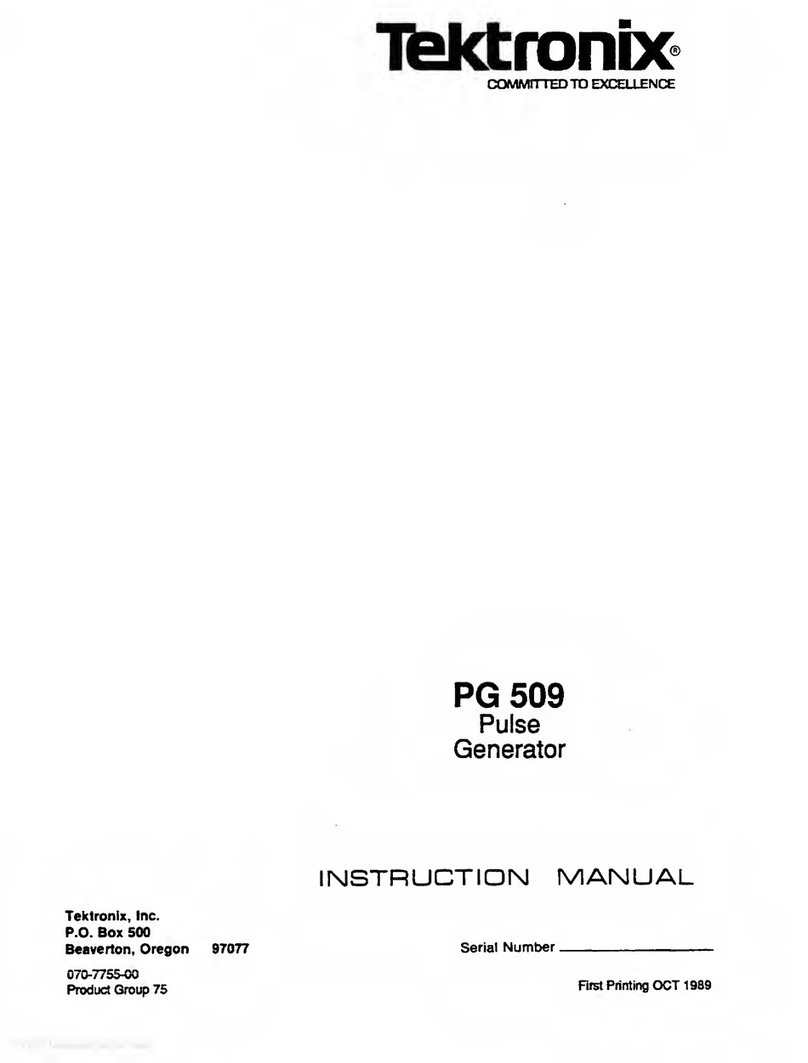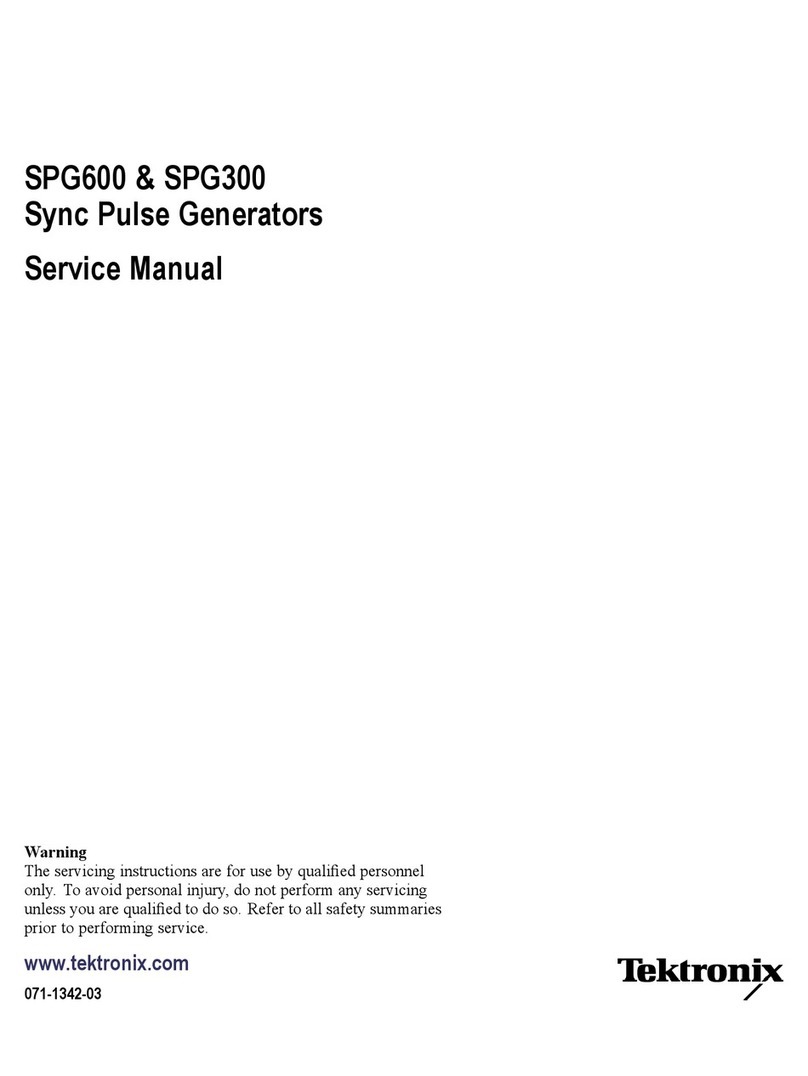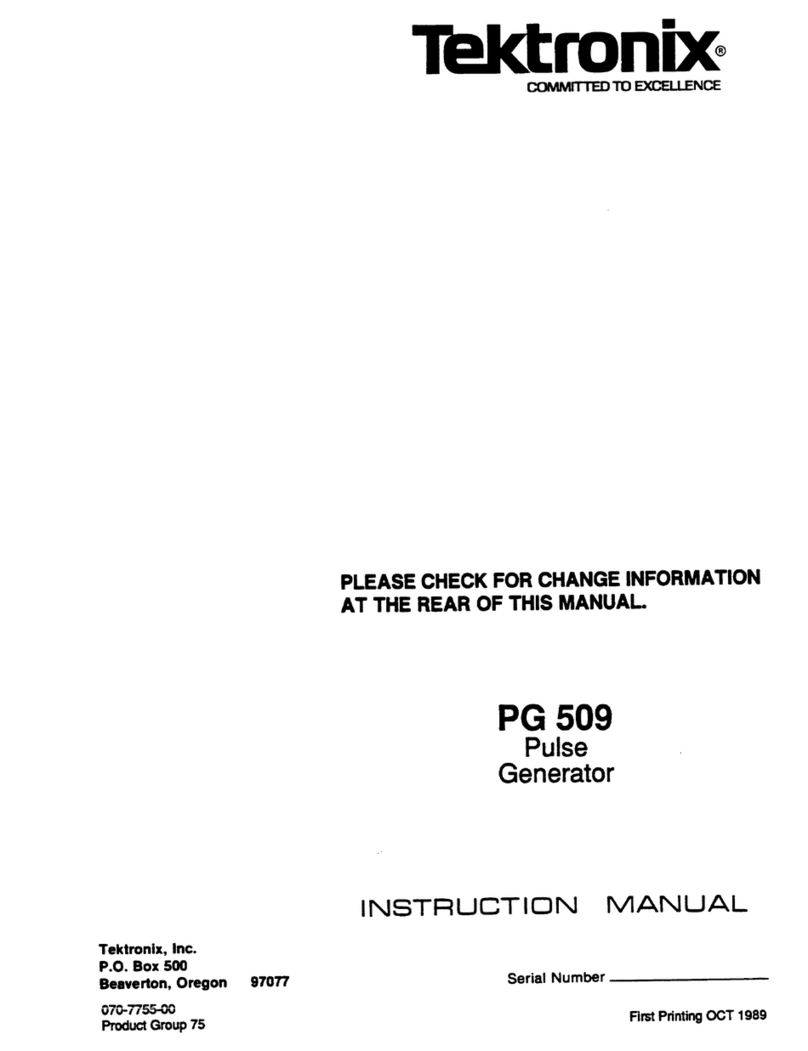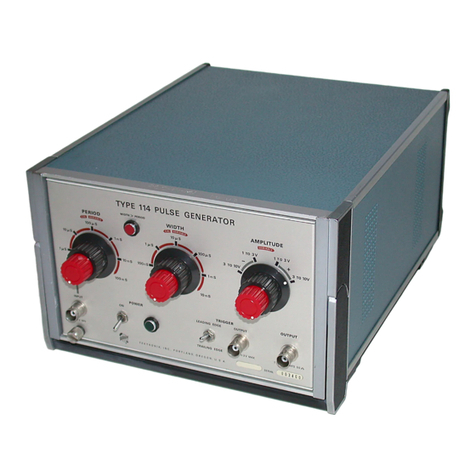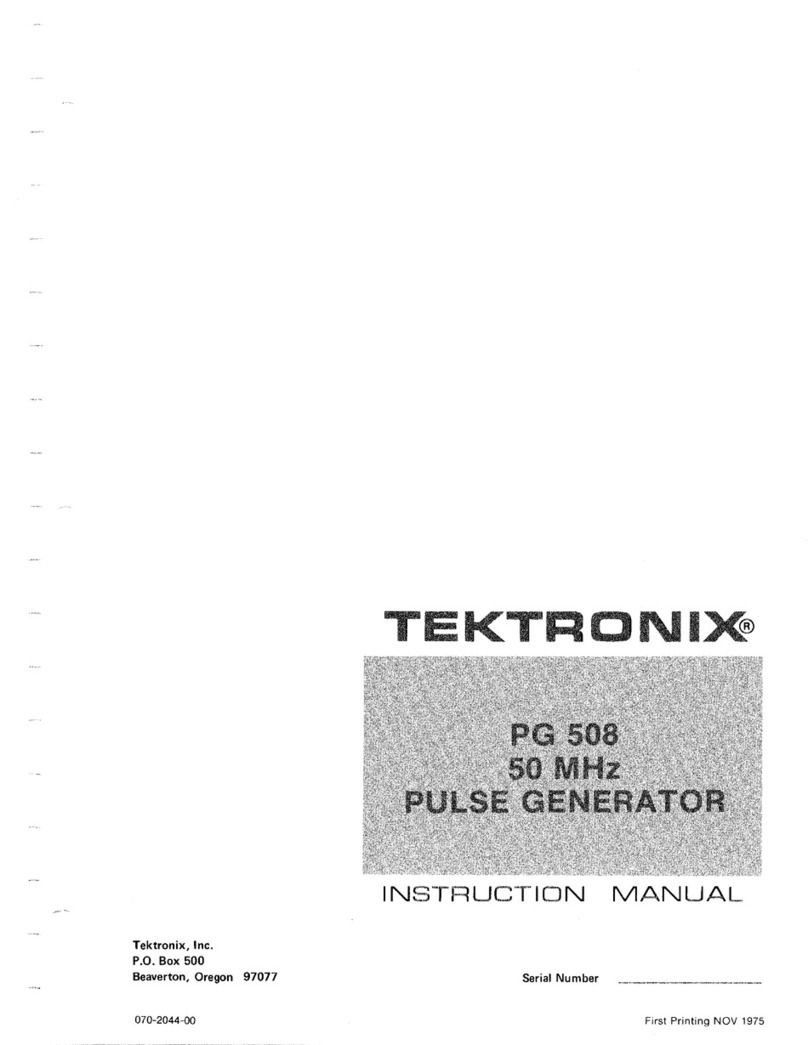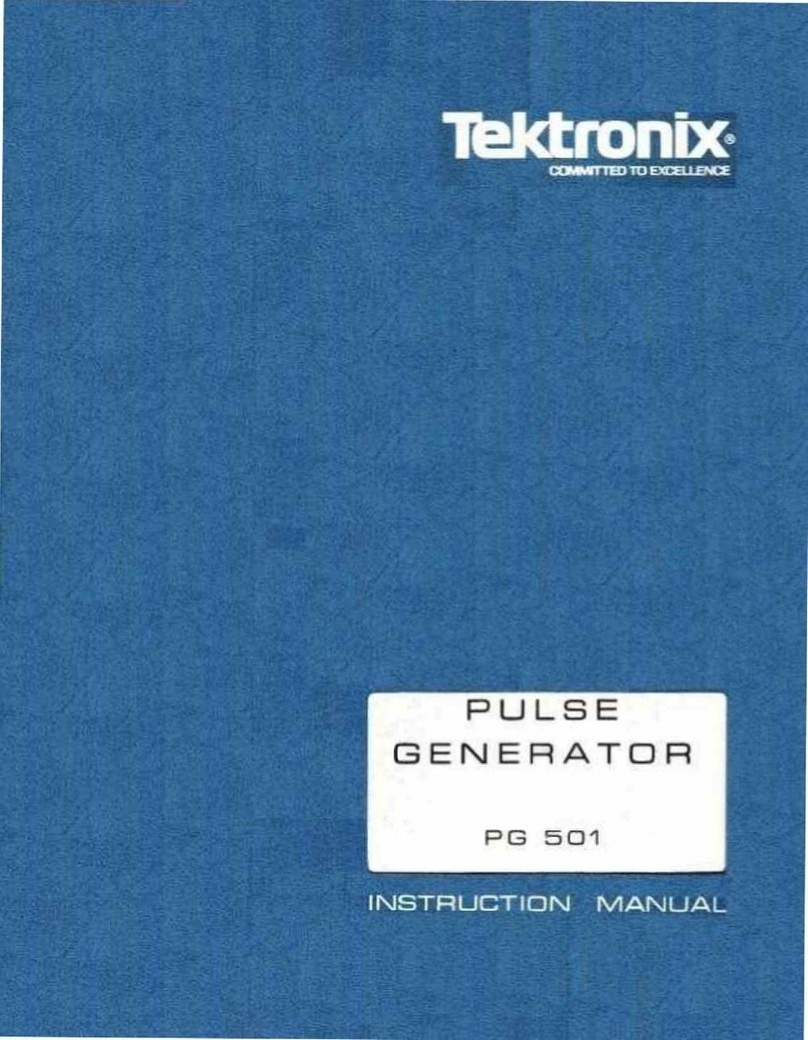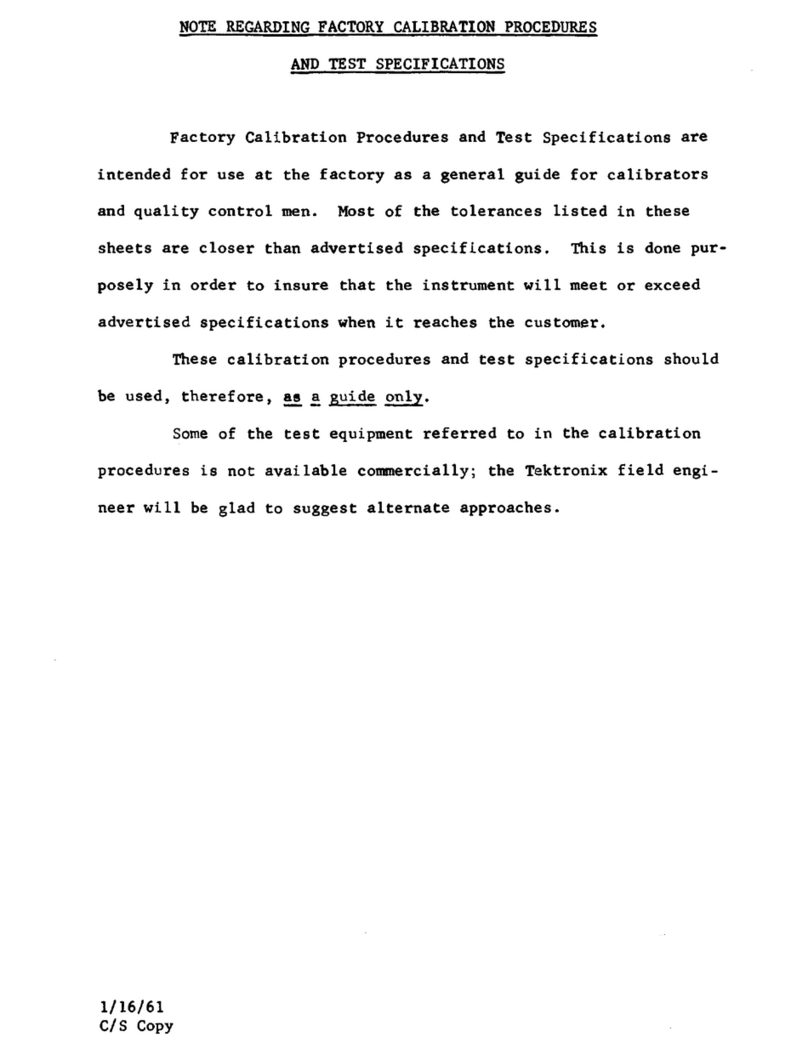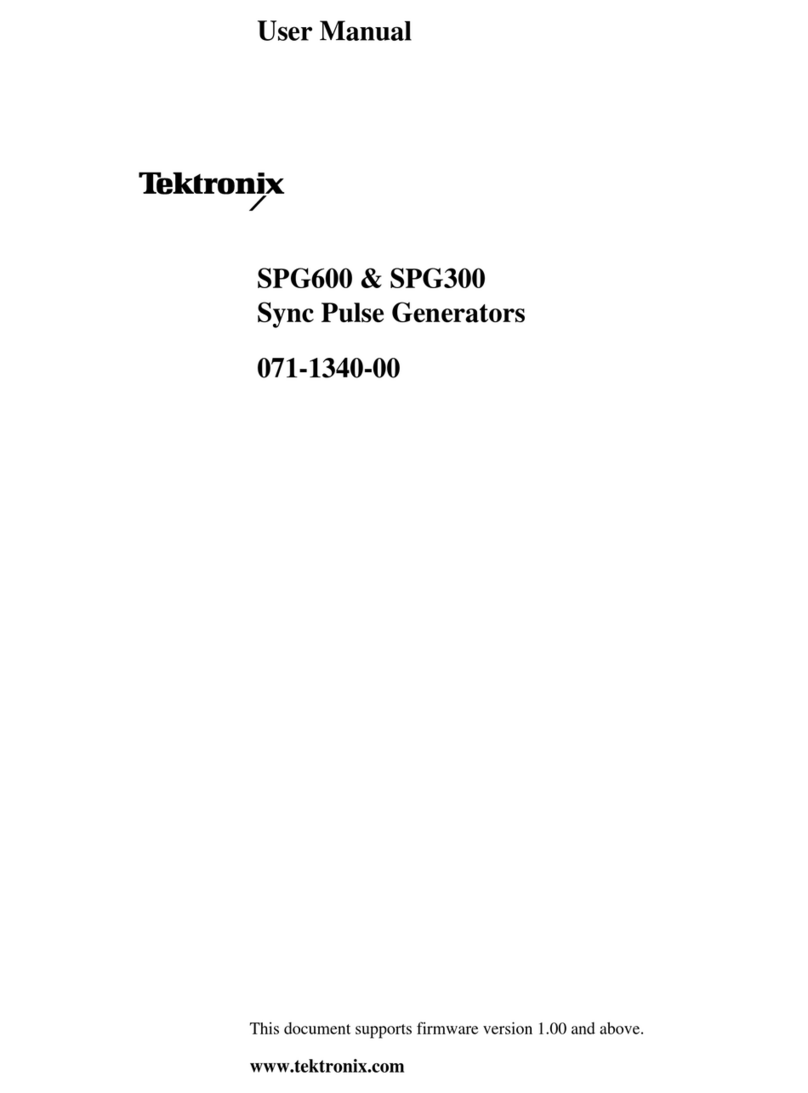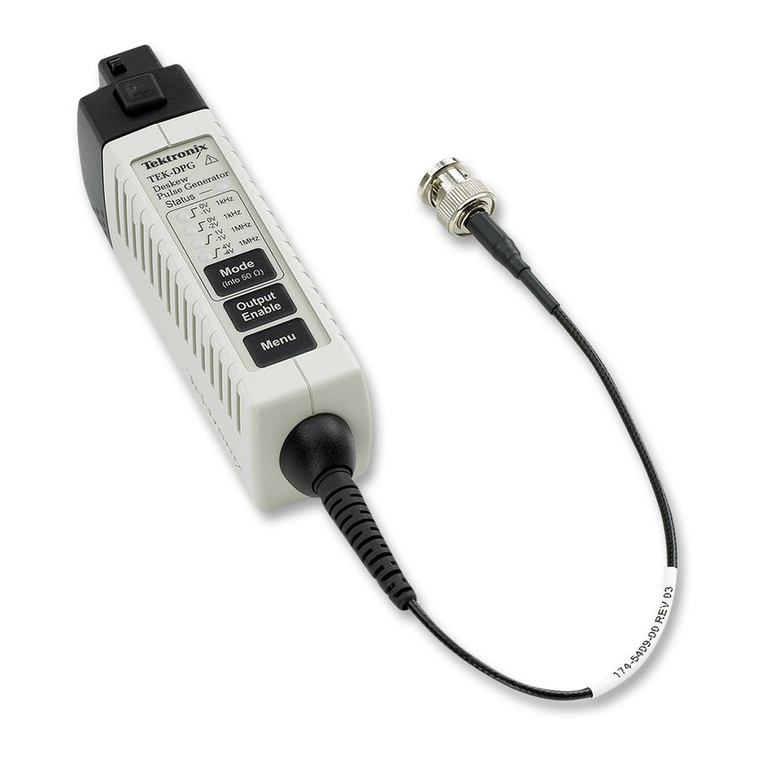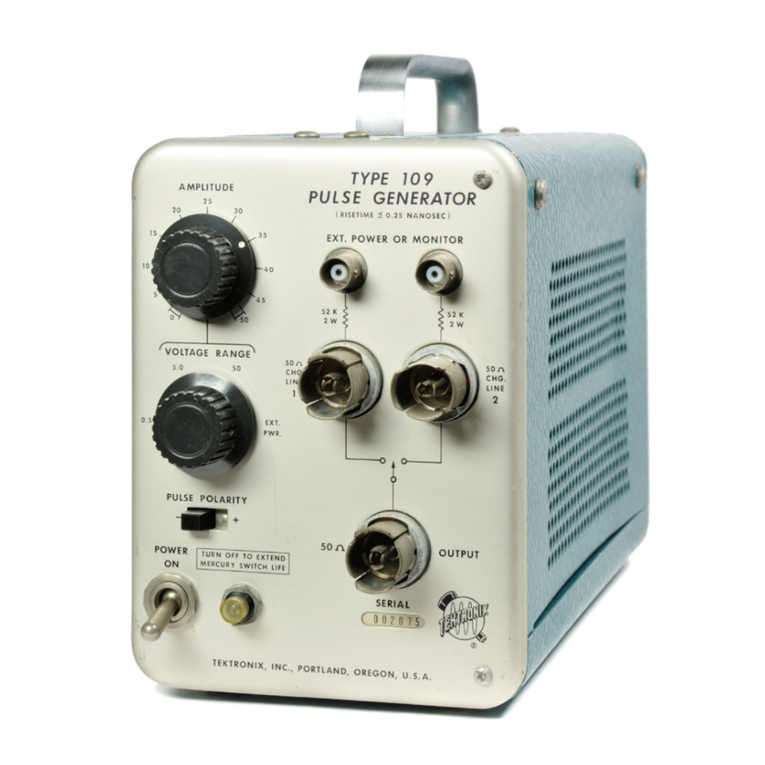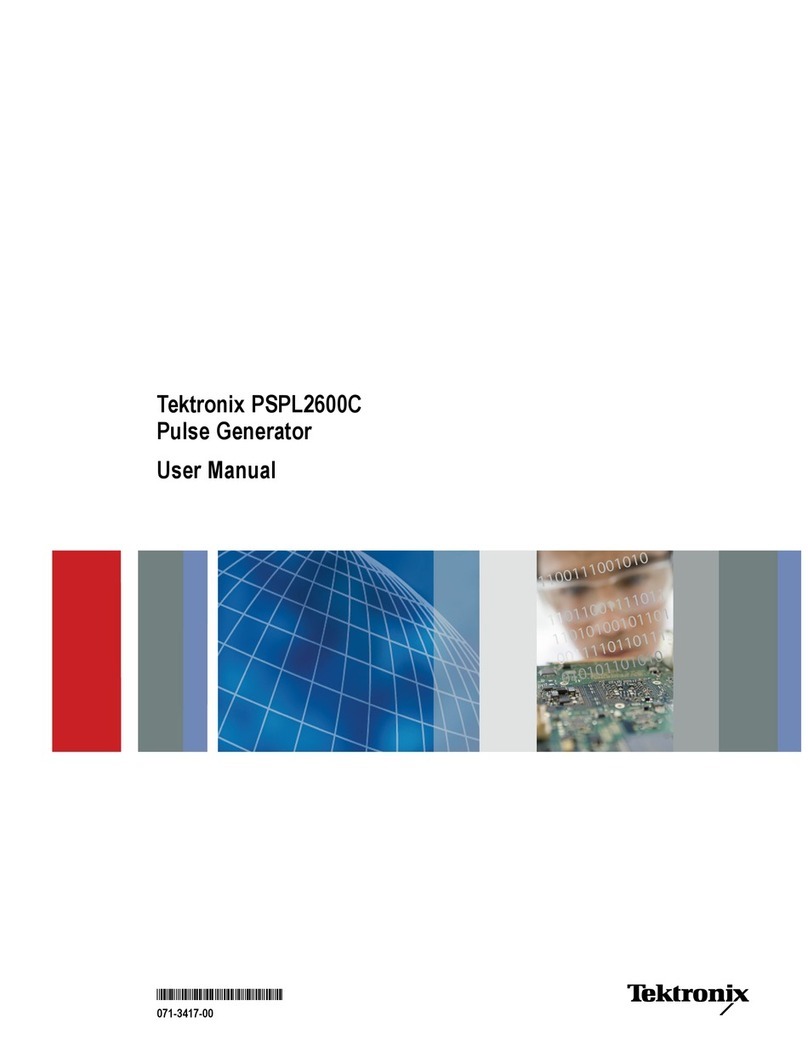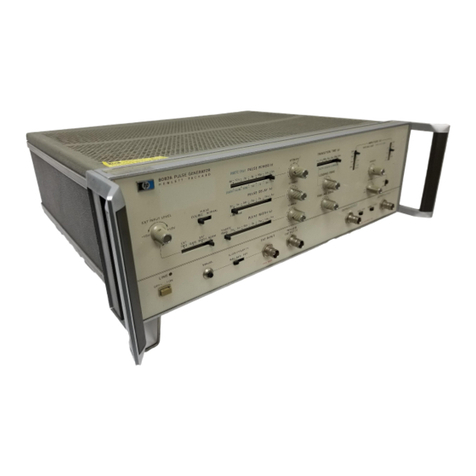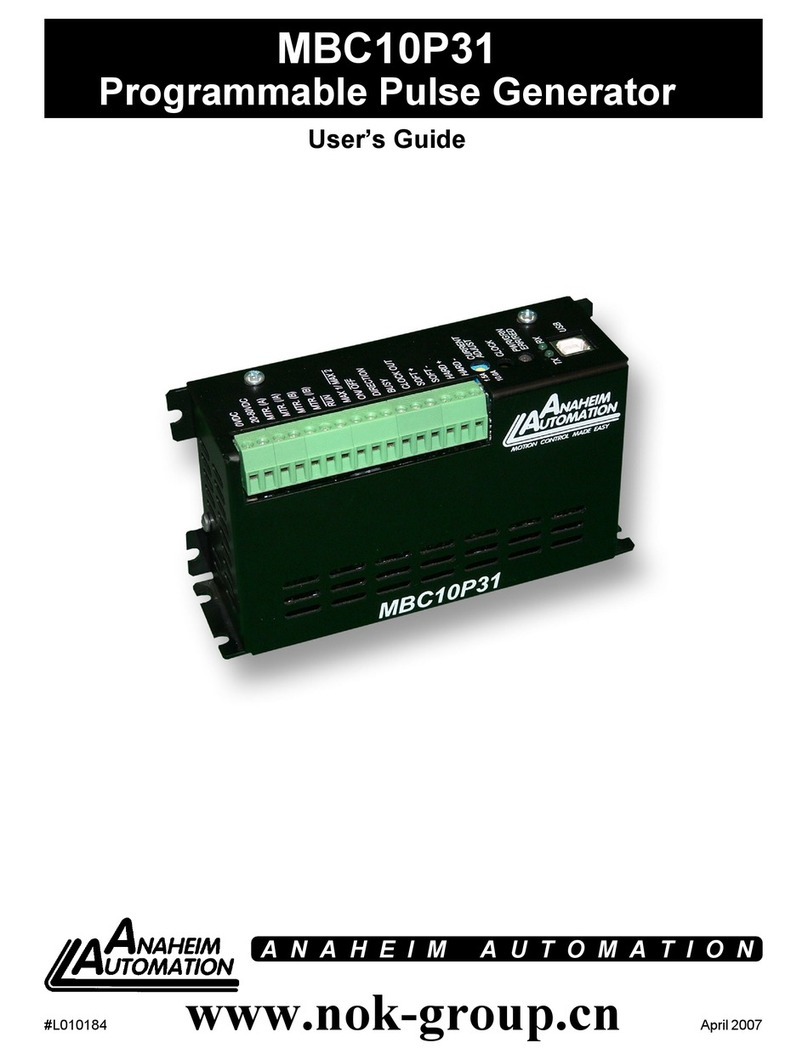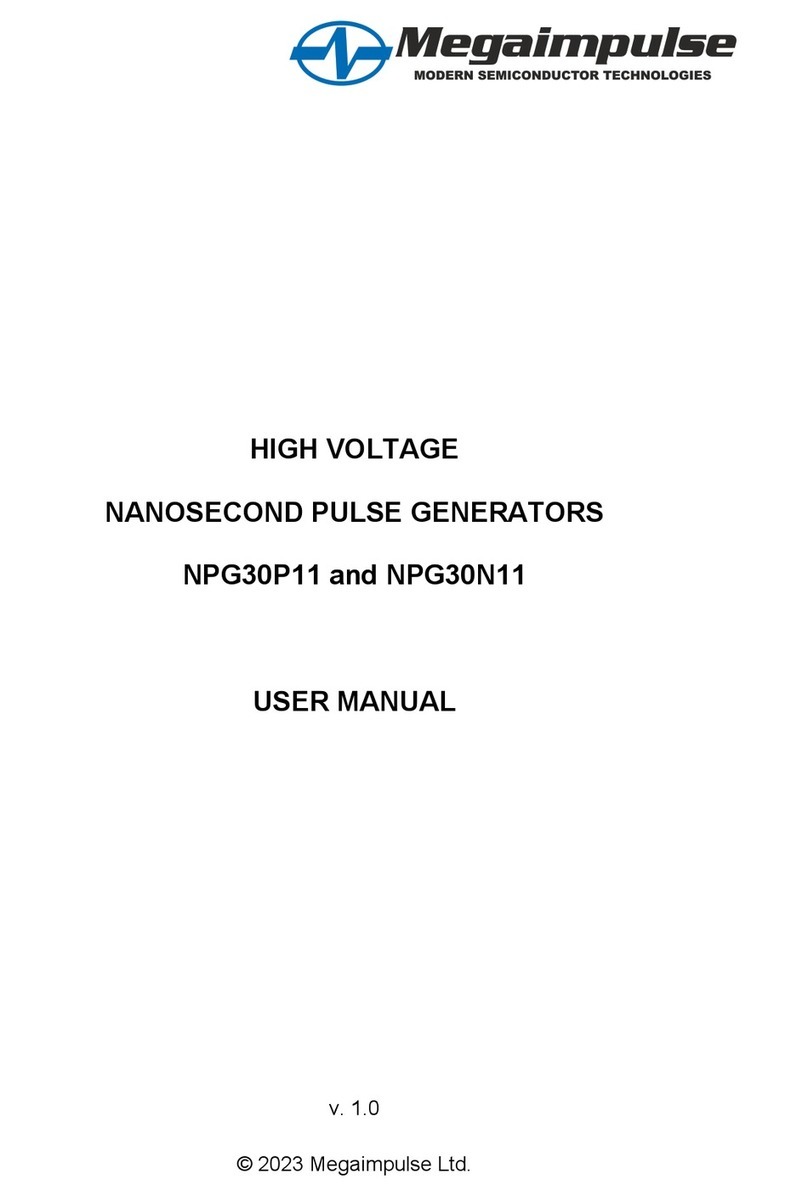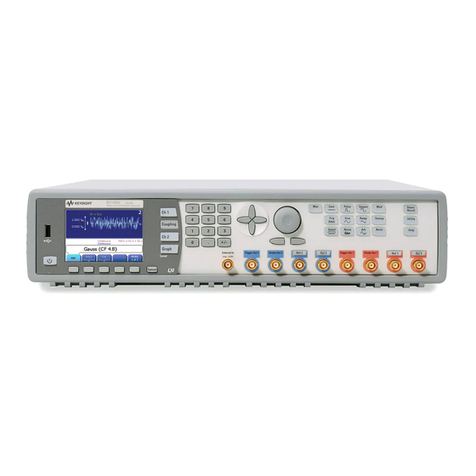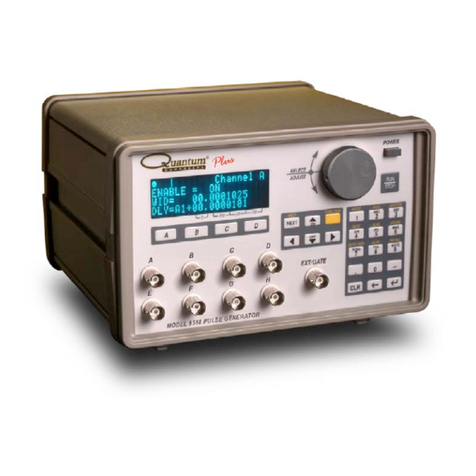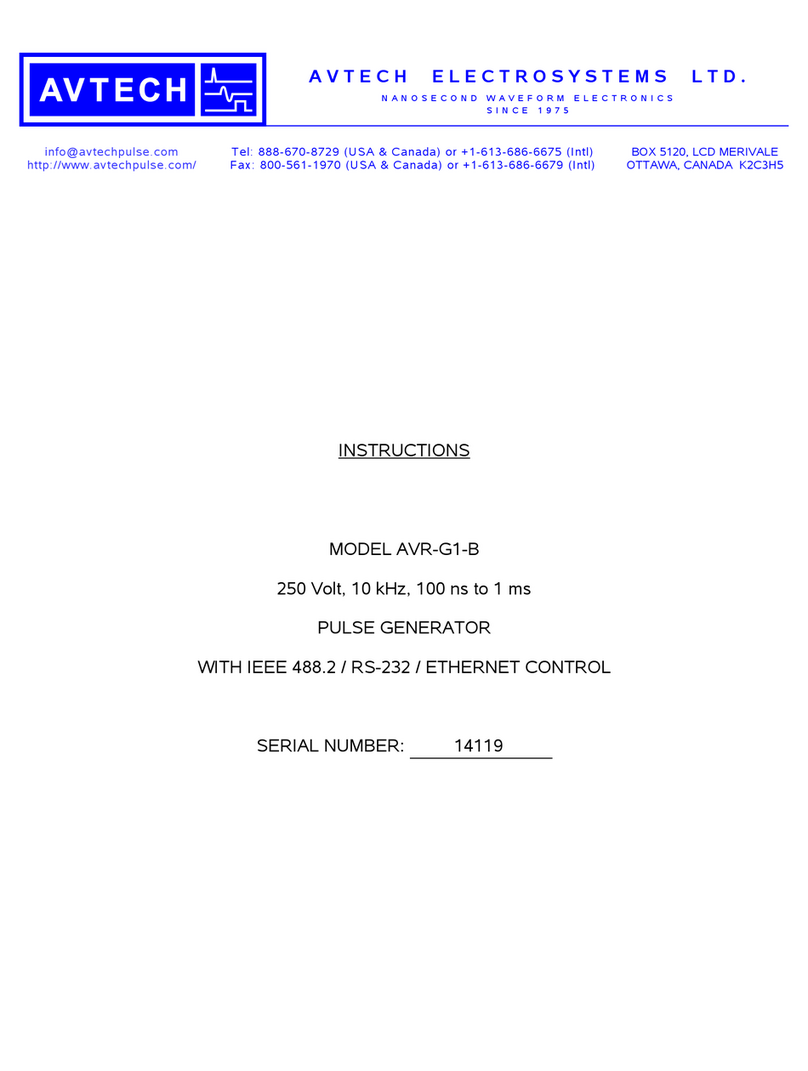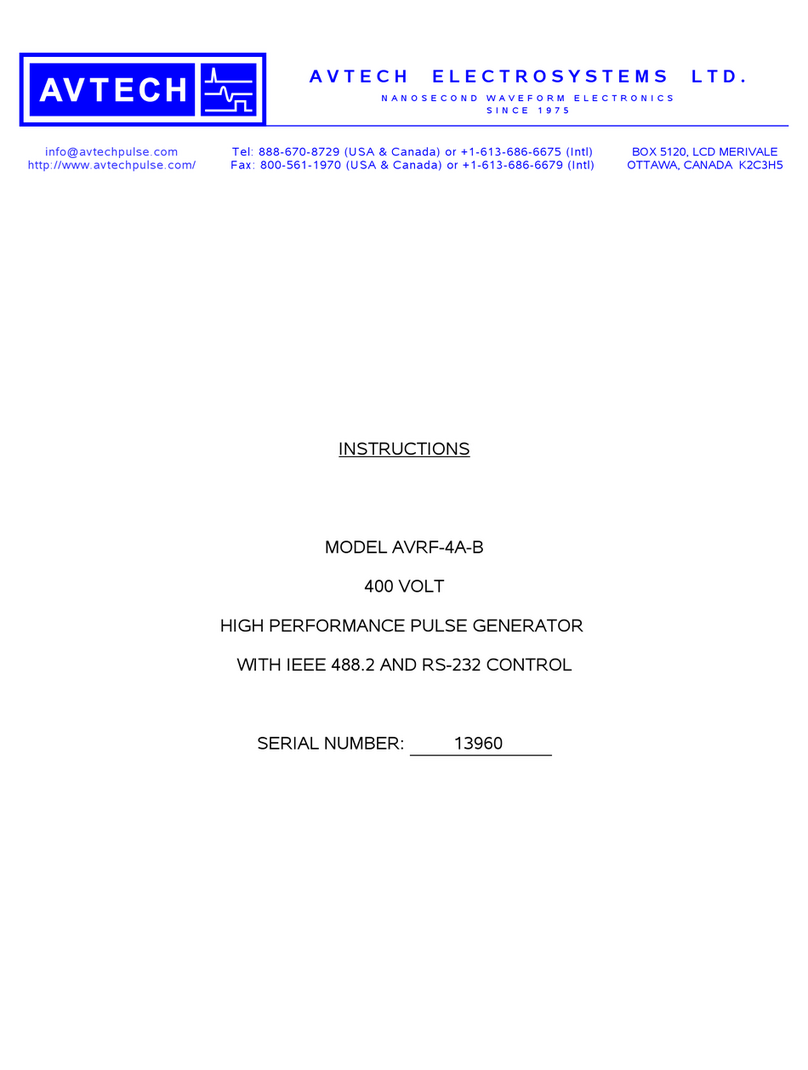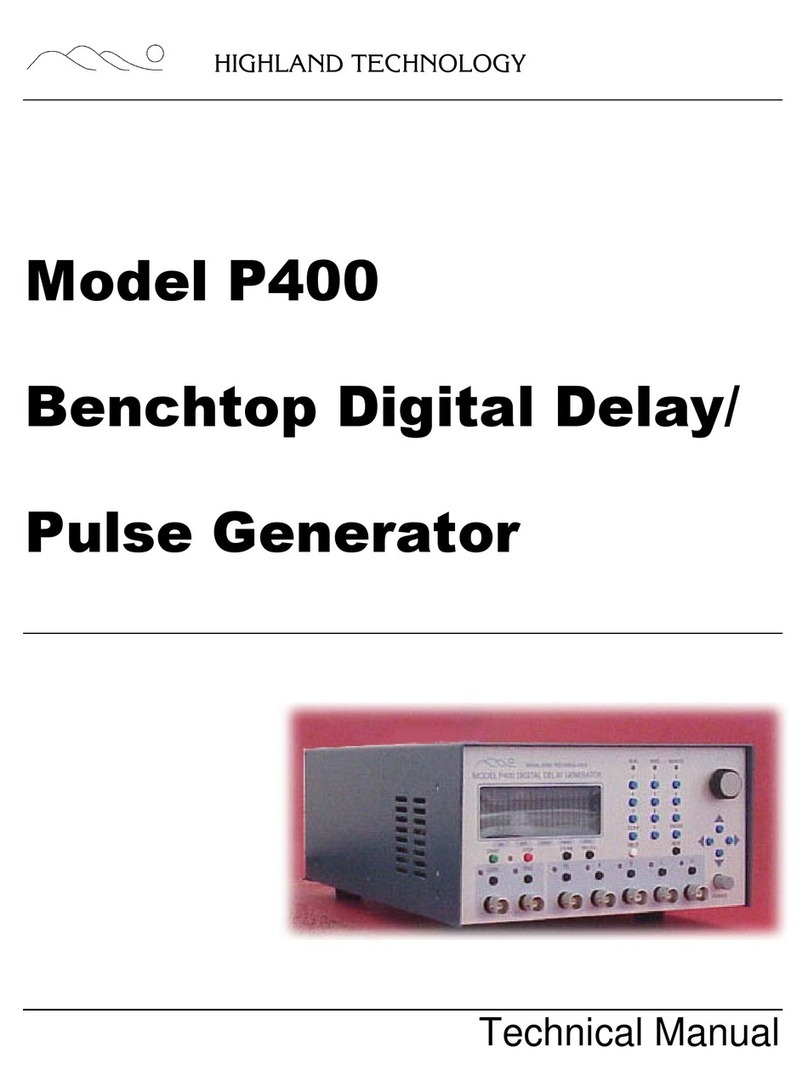
Operating Instructions-PG 502
I.
OPERAT ‘ING CONSIDERATIONS
Output Terminations arid Connections
reflections. For maximum fidelity. use ths special three
The output of the PG 502 operates as a 100 mA current foot long 50 .Q coaxial cable with special BNC connectors
I
source. It is designad to operate into an external 50 $I load. supplid %s % standard ‘accessory (Tektronix Part No.
An unterminated or improperly terminated output causes 012-0482-00). Us% the internal back termination whenever
aberrations on the output pulse (see Impedance Matching). oossible.
Loads less than 5Ofi reduce the pulse amplitude. Loads
I
greater than 50 $1 increaae the amplitude. An external 50 $2 When signal comparison tne%sur%ments or time differ.
load also urovides a DC return path for the output current. ence determinations are made, the two signals from the test
device should travel through coaxial cables with identical
I
A selectable 50 .S2back termination is provided [pull the 10s~ and time delay characteristics.
button tabled BACK TERM (PULL) on the front panel].
The back termination also helps to absorb reflections. The
I
output v&age is divided by two when using the back Make certain the attenuators and terminations used can
termination. The back termination provides the DC return safely handle the maximum PG 502 power output of
path for the outp,ut when driving high impedance or
0.5
Watts.
capacitively-coupled loads. If the output of the PG 502
I
drives a high impedance load using the back termination,
the output voltage is limited to approximately f5 V. When making connections that %re not in a 5Ofi
environment, keep all lead lengths short, l/4 inch or lass.
Accessory filters to increase risetimes and reduce the need
I
A DC current in the 50 51 output load CBUSS the output for high quality attenuators and terminations are’available.
pulse to be offset.. Do not apply voltages greater than plus See your Tektronix Representative for more information.
or minus 5 V to the output of the PG 502. If the load has %
I
DC voltage across it greater than the maximum allowed,
connect a blocking capacitor in series with the OUTPUT
connector and the load. Us% the back termination to
Impedance Matching
provide a PC return path for the output current. Make A mismatch, or different impedance in a transmission
el
certain the time constant of the capacitor and the load is
large enough TO, maintain pulse flatness. The output line, generates a reflection back along the line to the source.
circuitry of the PG 502 is fully protected against any The amplitude and polarity of the reflection ar% determined
voltage transients in the output resulting from passive loads. by the load impedance in relation to the characteristic
I
impedance of the cable. If the load impedance is higher
than the characteristic impedance of the line, the reflection
Under cenain conditions, it is possible to operate the will be of the wna polarity as the applid signal. If it is
PG 502 into a high impedance load without using the lower, the reflection will be of opposite polarity. These
I
internal termination. Pulse amplitudes up to about 18 V reflections add or subtract from the amplitude of the
(-9 V to +9 VI can be obtained in this manner with load incident pulse causing distortion and irregular pulse shapes.
impedances in excess of 180 .Q. The PG 502 is not specified
I
when operating in this mode. To we the instrument in this
manner, view the output with an oscilloscope while A simple resistive minimum attenuation impdsncs-
matching network that can be used to match the PG 502
adjusting the OUTPUT (VOLTS) control,s for the desired
waveform. output into relatively low impedances is shown in Fig. 1-2.
.I
To match impedances with the illustrated network, the
following conditions must exist:
Maintaining Pulse Fideky
Due to the extremely fast pulse r$etimes obtained from
I
the PG 502, special consideration must be given to prewva-
tion of pulse fidelity. Even et low repetition rates, 1 GHz
(R,+q R,
frequency components are pr%s%nt in the output waveform.
Rl+z,*R=
rm5t equal 2,
I
Use high quality coaxial cables, %tt%nuators. and termina-
tions. and
I
RG 58 type coaxial cable and typical BNC connectors
a
exhibit impedance tolerances which may cause visible
,I
I-2
1,
Q I


